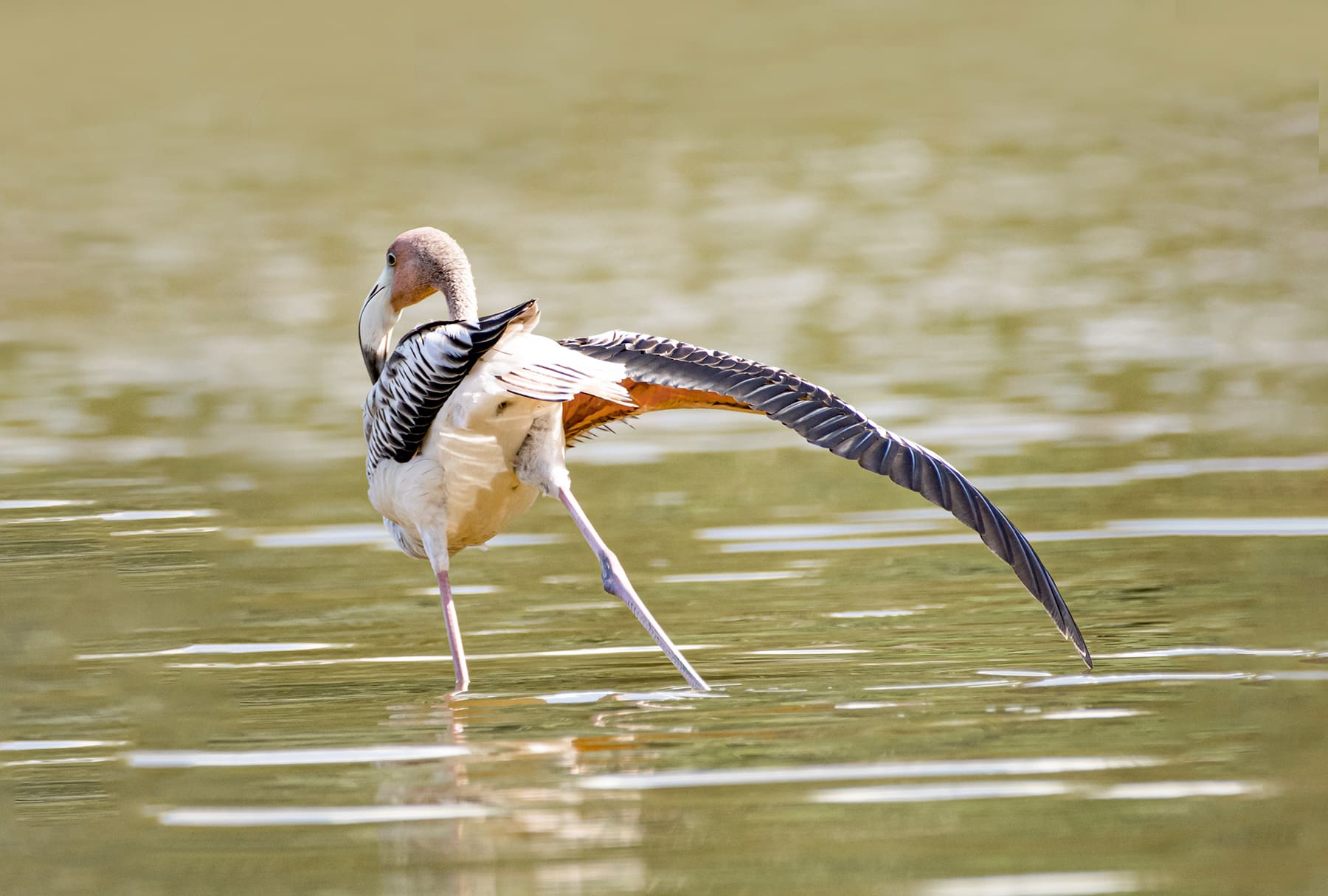
Flamingos rarely come to St. John, so I was delighted that we had one here in December, just in time for the annual Christmas bird count. A group of adults and juveniles had been spotted at a different south shore pond back in October, but I had missed them. Maybe this was one that decided to stay on by itself or to come back.
When I first went by, the flamingo seemed to be doing a sort of dance as it preened its feathers. Or maybe it was just enjoying stretching out its wings and legs.
Some of the poses were touching, especially when it tucked up its foot and wrapped its neck around as if giving itself a warm hug.
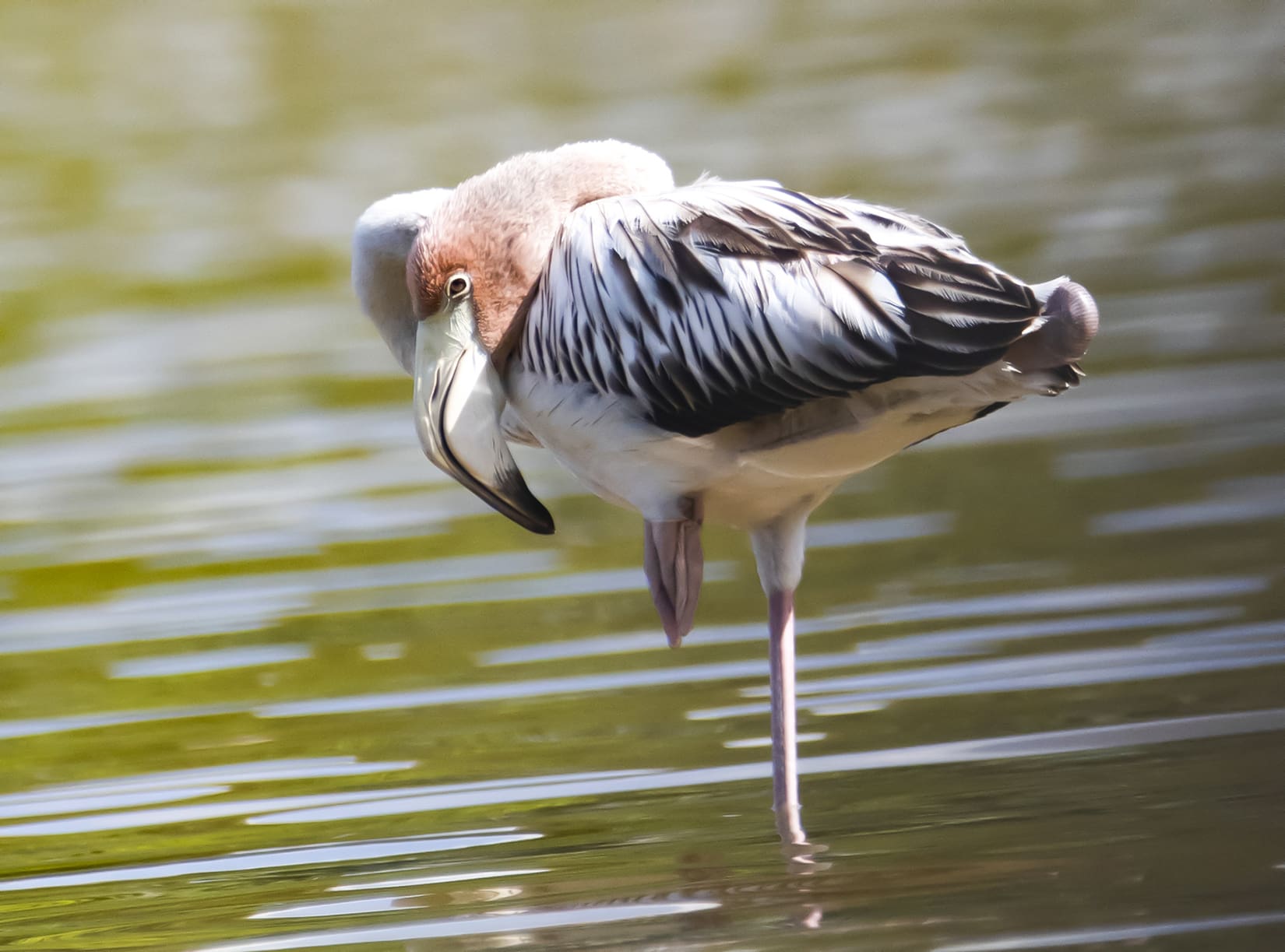
My son pointed out that ‘flamenco’ is Spanish for flamingo, so maybe it wasn’t so surprising that these birds appear to be graceful dancers. At one point the flamingo even seemed to be inviting a pair of White-cheeked Pintail Ducks to join in the dance.
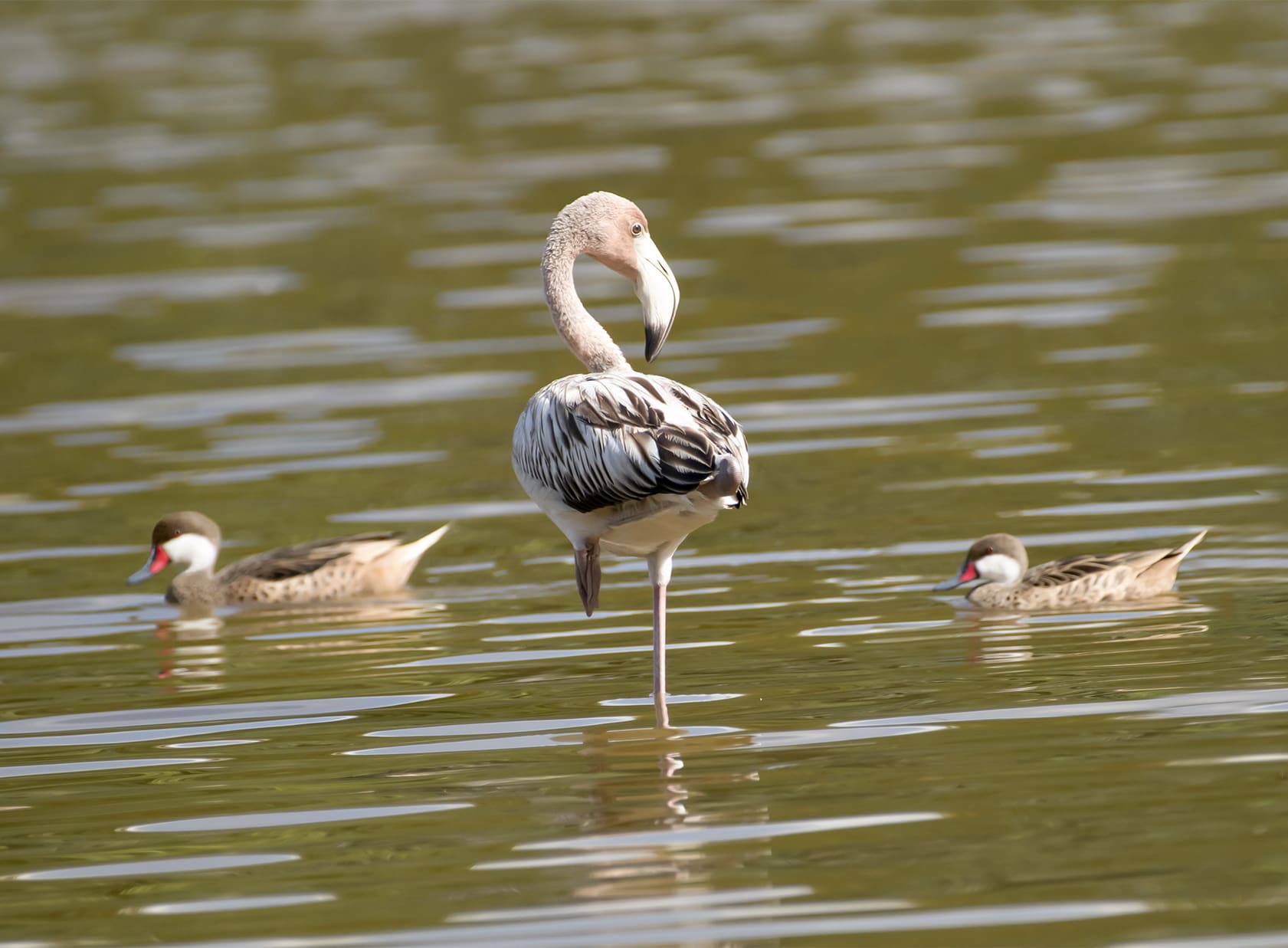
This bird wasn’t the bright pink you expect from a flamingo, though. It takes the young ones several years to get their full color and, in the meantime, they have black and white feathers, and pale pink legs and throats.
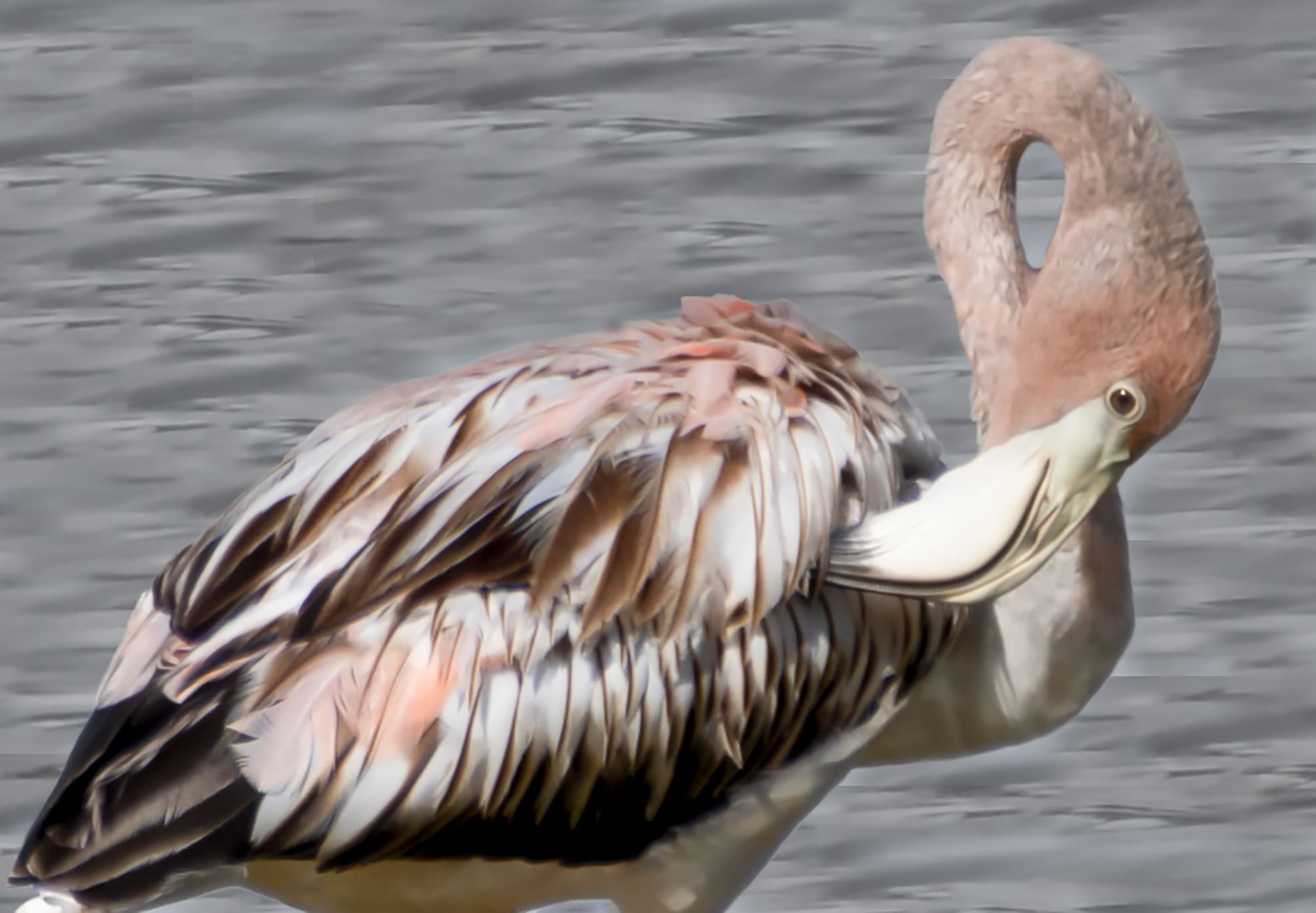
They also have to have a proper diet. Their pink coloration as adults comes from carotenoids in microscopic algae, which flamingos are able to metabolize to create pigments in their feathers. They can eat the algae directly, or get the carotenoids from eating brine shrimp or other tiny creatures that also feed on the algae growing in shallow, salty ponds.
The way flamingos eat is really interesting to watch. They put their heads down under the water and shuffle their feet around to kick up edible stuff off the bottom of the pond. Their bills are facing their feet, and they use their tongues to push the kicked-up water through their mouths, while filter plates along the edges trap the edible bits.
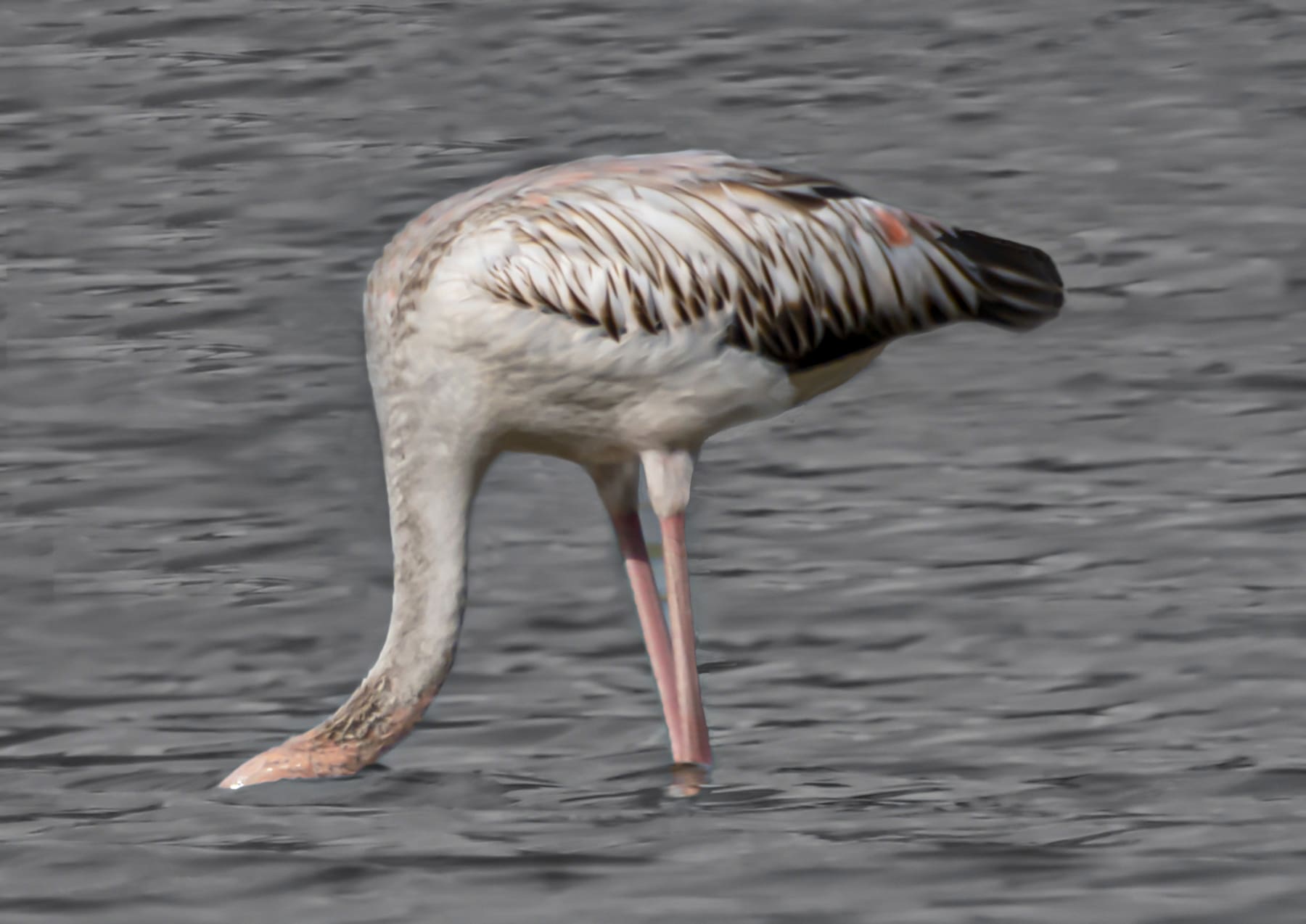
Eating behavior is not as graceful as the preening poses, mostly because the bird’s head is underwater. However, its shuffling feet move around in a circle, and you can imagine the joy of a whole chorus line of big pink birds dancing by.
Looking at the flamingo standing upright, you can see that the lower part of the jaw is much thicker than the top part. That part is fixed to its skull and doesn’t move. Underwater, the thick part is on top as the bird faces backwards, and the thinner part flaps up and down to push food in the water into its mouth.
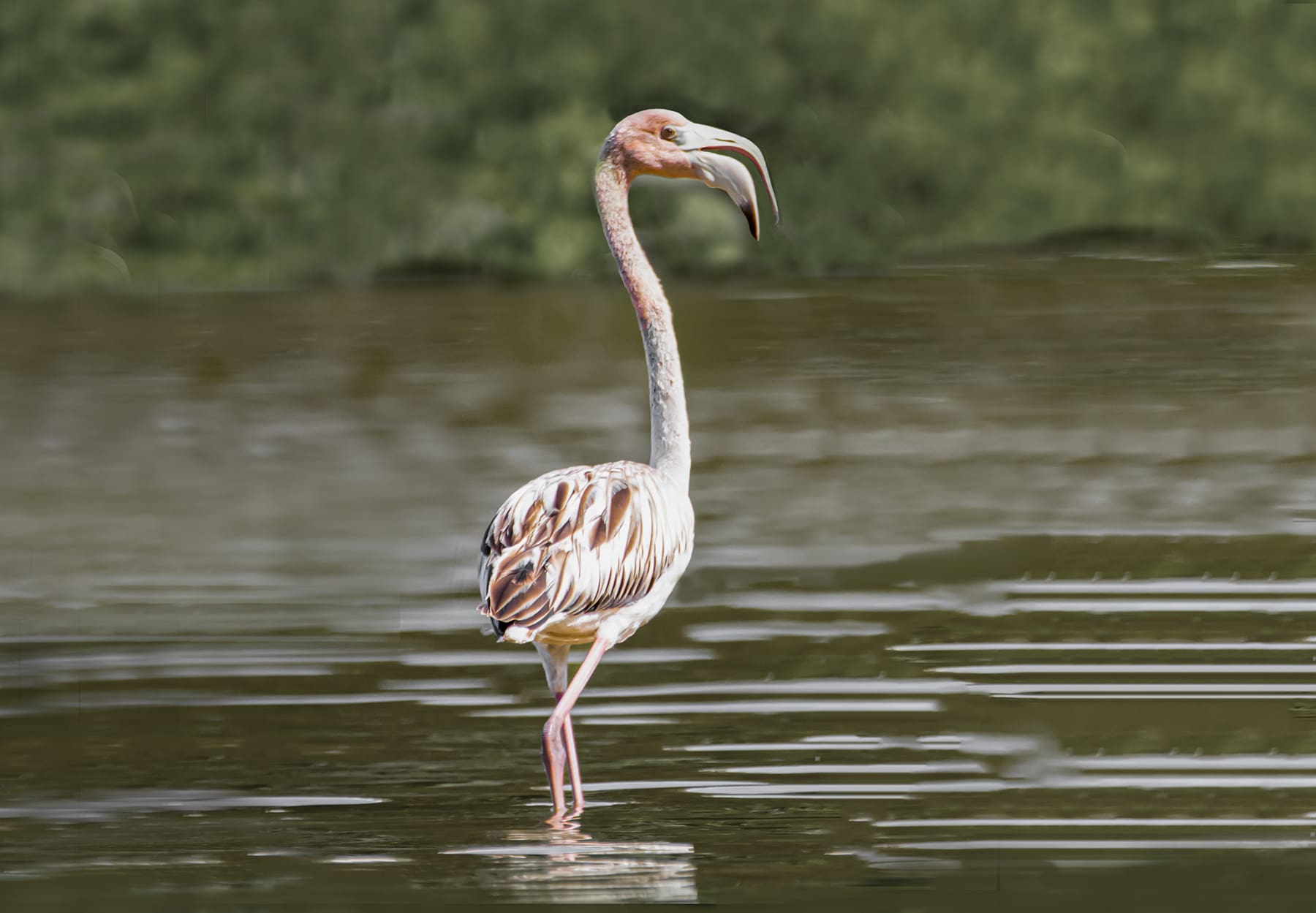
There used to be quite a few flamingos in the Virgin Islands, but they died out not too long ago, probably due to a mix of hunting, hurricanes, predation and loss of habitat.
In the British Virgin Islands, a small flock of flamingos was reintroduced in Anegada in 1992, and more recently another group was brought to Necker Island by Richard Branson. Those flocks have been breeding and growing, and some birds have spread to other parts of the BVI, with occasional visitors to St. Thomas and St. John that are enthusiastically welcomed.
It certainly would be fun for St. John to have its own flock of flamingos — a group is actually called a “flamboyance.” However, on Anegada the flamingos ended up moving to parts of the island inaccessible by road in order to avoid being aggravated by eager observers, so maybe they are really better off staying in more remote places.
Gail Karlsson is an environmental lawyer, writer and photographer. She is the author of two books about the Virgin Islands – The Wild Life in an Island House, and the guide book Learning About Trees and Plants – A Project of the Unitarian Universalist Fellowship of St. John. She has also recently published A Birds’ Guide to The Battery and New York Harbor. Follow her on Instagram @gailkarlsson and gvkarlsson.blogspot.com.





